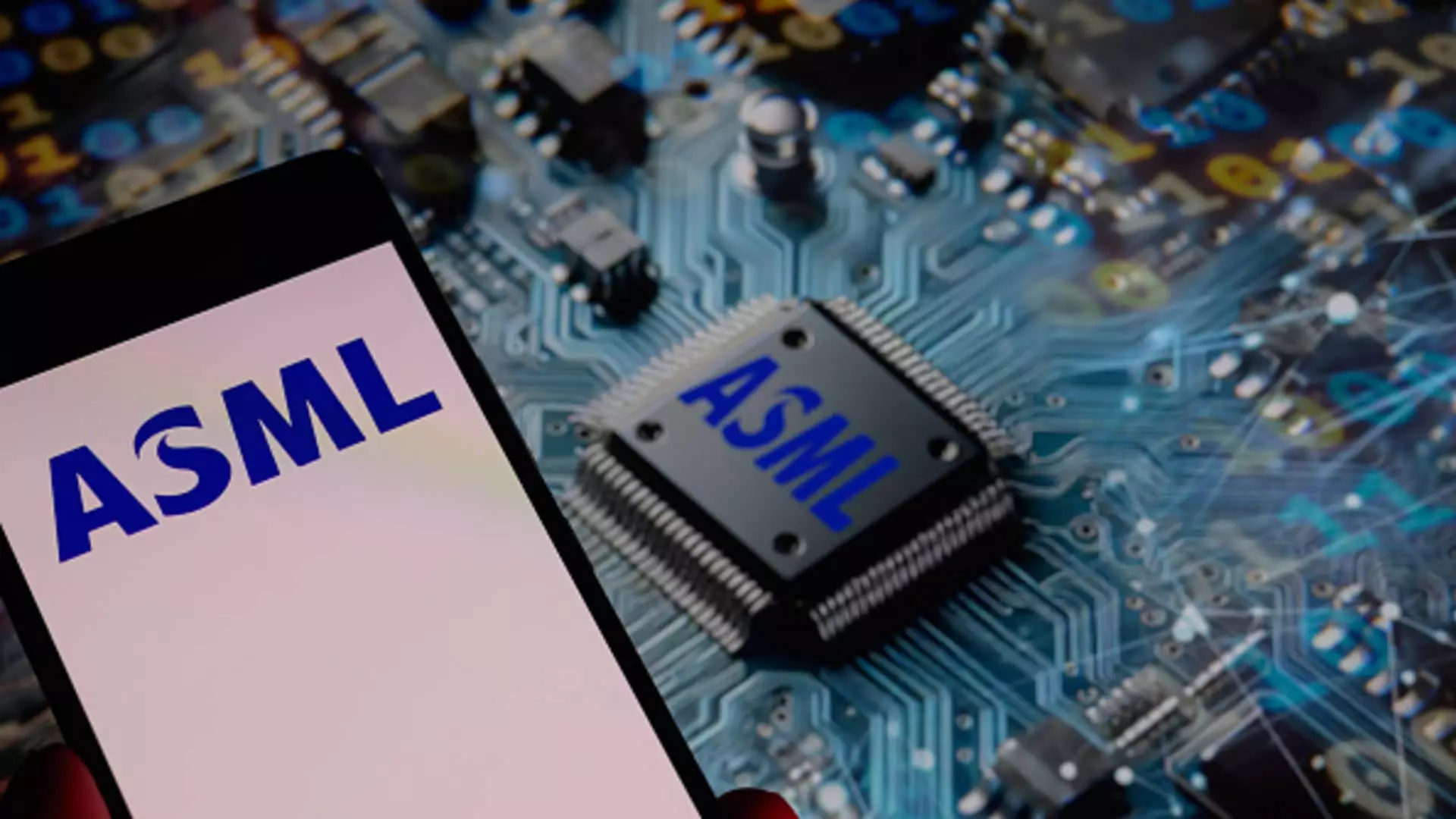In a glaring manifestation of market turbulence, the semiconductor industry, long heralded as the backbone of modern technology, is confronted with an existential crisis as exemplified by ASML. Once valued at over $429 billion, ASML has seen its market capitalization dwindle by a staggering $130 billion within a mere year, crumbling under the weight of export restrictions to China and the looming specter of U.S. tariffs. This rapid descent not only highlights the inherent volatility of semiconductor stocks but also raises questions about the sustainability of a sector heavily reliant on global trade dynamics.
The recent fluctuation in ASML’s stock, which plummeted from the pinnacle of over 1,000 euros per share to just under 297 billion euros, is not merely a statistical blip but a wake-up call. Industry analysts have pointed to tightening U.S. export controls on chips as the primary catalyst for this downturn. It’s a precarious position for companies within the semiconductor supply chain, revealing the fragile underpinnings of a market that once seemed invincible.
Export Restrictions: A Double-Edged Sword
The export restrictions imposed by the U.S., ostensibly aimed at curbing China’s technological advancement, reflect much more than mere economic strategy; they signify a geopolitical chess game with far-reaching implications. ASML, renowned for its cutting-edge extreme ultraviolet lithography (EUV) machines essential for manufacturing state-of-the-art chips, finds its hands tied. The inability to ship these vital tools to China has closed a door that was once a critical revenue stream.
While the U.S. government contends that these measures are necessary for national security, one must ponder the collateral damage inflicted on companies like ASML. CEO Christophe Fouquet himself acknowledges a bleak forecast for ASML’s market share in China moving forward, projecting a diminished ratio of business within the next few years. This foresight underscores the staggering reality that a whole sector is being held hostage to political maneuvering.
The Ripple Effect on Global Markets
The ramifications of these restrictions are not felt solely by ASML; they echo across the global semiconductor landscape. Competitors and partners alike, including behemoths like TSMC, are also grappling with similar fears and uncertainties. The pessimism surrounding U.S. tariffs and the broader trade environment creates a climate of distrust, discouraging investment and innovation.
Industry experts, like Stephane Houri of ODDO BHF, have articulated a sentiment of apprehension regarding over-investment in artificial intelligence and its subsequent impact on demand for semiconductor products. The reality that companies may be investing in technologies that the market isn’t ready to fully embrace adds another layer of complexity. Investors are left to wonder if we are witnessing an unsustainable bubble or simply a momentary dip in an otherwise robust market.
Potential Pathways: Can ASML Emerge Victorious?
Despite the doom and gloom, there remains a fraction of optimism among analysts who foresee a potential rebound for ASML. Many are still bullish, holding a target price of over 779 euros, suggesting a healthy upside that could occur with the right trajectory in global trade relations and chip production demands. As the geopolitical landscape evolves, the possibility of a U.S.-Europe trade agreement could alleviate some of the current uncertainties.
Companies like Samsung and Intel continue to pursue next-generation chipmaking tools, igniting hope that demand will ultimately rebound, even in the face of dire predictions. ASML’s enduring position as a unique producer of EUV machinery underscores its strategic importance. But the pivotal question remains: will the company adapt to these rapidly changing dynamics, or will it become yet another casualty in an industry wrestling with external pressures?
The cascading events surrounding ASML may well serve as a litmus test for the semiconductor sector, reflecting the intricate dance between international relations and market viability. As the dust settles on this turbulent landscape, one has to remain vigilant; the fate of ASML is intricately tied to the larger narrative of technological advancement, freedom of trade, and global economic stability. The question lingers: can we truly afford to let politics dictate the future of our technological progress?



Leave a Reply